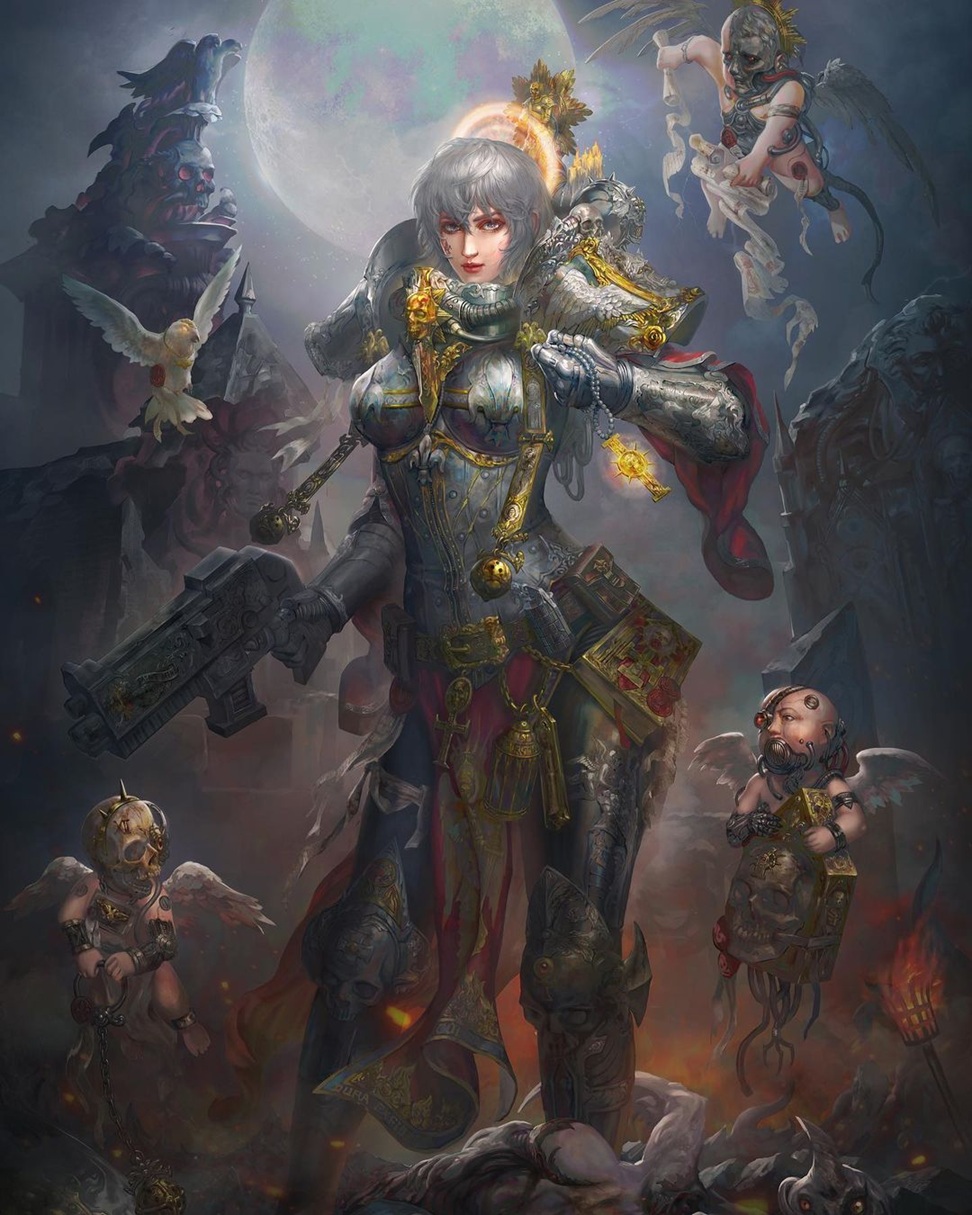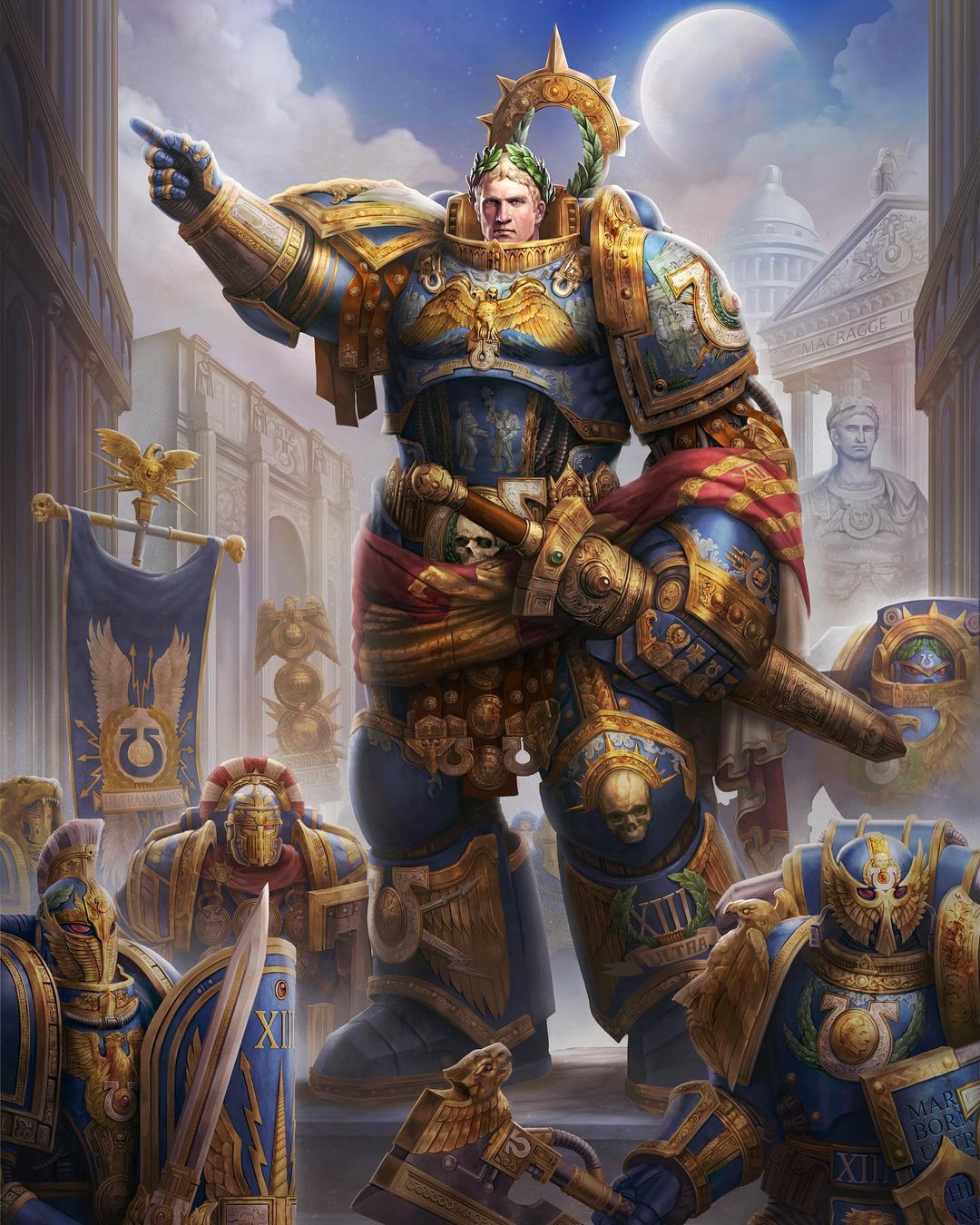
For the Emperor: A Soul Divided
A Split Soul on Canvas
This dramatic painting titled “For the Emperor” by artist Chen captures the duality of a single being torn between loyalty and damnation. The composition is cleaved vertically by a jagged bolt of warp energy, dividing the subject into two mirror halves. On the left, a regal and pristine warrior clad in red and gold—an unmistakable loyalist of the Emperor—glares with solemn purpose beneath a crown of candles and a mask of judgment. On the right, his form is twisted, mutated, and clad in Chaos-forged armor with writhing serpentine motifs, monstrous mutations, and a hellish purple glow. The lighting and contrast sharply emphasize the psychological conflict and physical transformation at play. It is a haunting portrayal of internal fracture and a visual echo of the eternal war between the Imperium and the Ruinous Powers.
A Tale of Two Destinies
This figure is not two separate individuals, but one soul shown across two fates—one that remained true to the Emperor, and one that fell to Chaos. The left half likely represents a loyalist Legionary, possibly from the Emperor’s Children given the ornate armor and symbols of perfection and nobility. The right side, however, is fully immersed in corruption, most likely representing the same Marine after falling to Chaos, serving Slaanesh, or possibly Chaos Undivided. The hydra-like forms and grotesque decorations suggest allegiance to a Dark God, with the armor almost alive, whispering temptations and power. The lightning bolt between the two sides symbolizes the moment of breaking, the irreversible choice that split one destiny into two. It’s a visual meditation on how thin the line can be between devotion and damnation in the 41st millennium.
Meaning Behind the Masterpiece
Chen’s painting is more than just character design—it’s a narrative about identity, ideology, and the price of faith. “For the Emperor” becomes a phrase loaded with ambiguity here. Did the subject once say it in truth, only to become a mockery of it later? Or does he still say it now, twisted by belief that his Chaos path is somehow justified? This duality makes the piece emotionally resonant and thematically rich, fitting seamlessly within the grimdark universe of Warhammer 40,000. It’s a story of what happens when ideals clash with ambition, when loyalty fractures under the weight of cosmic horror. Chen’s work stands as a chilling reminder: in the 41st millennium, even the most noble can fall.



